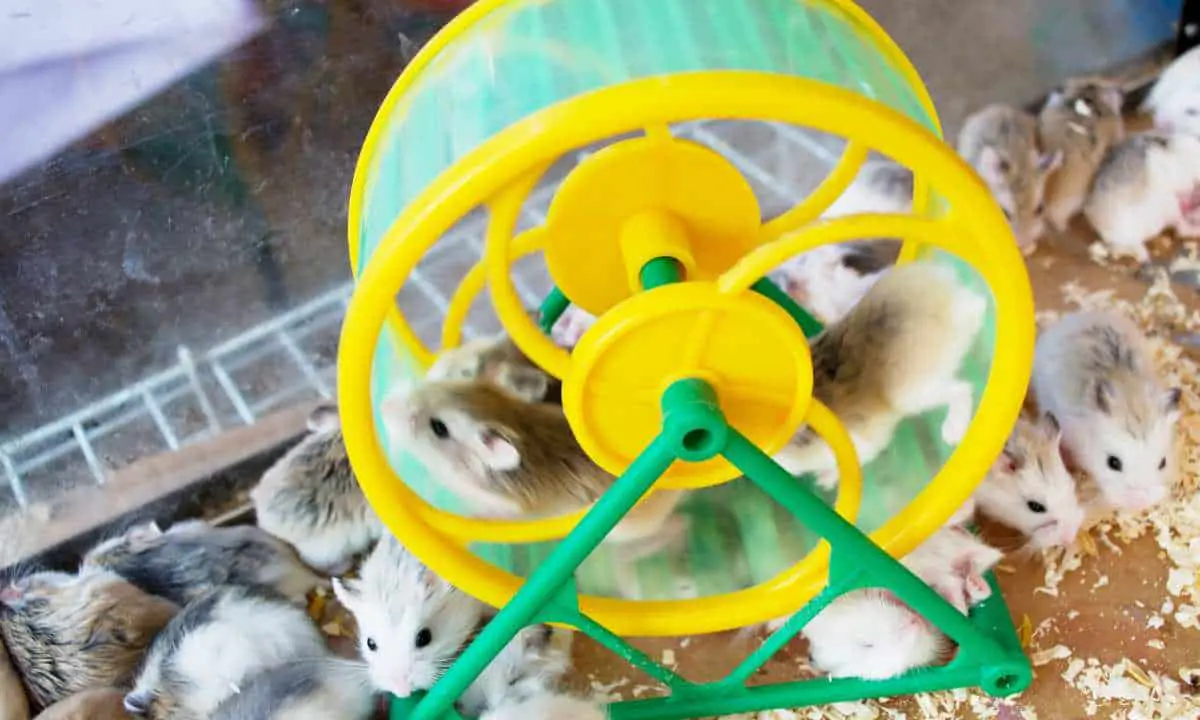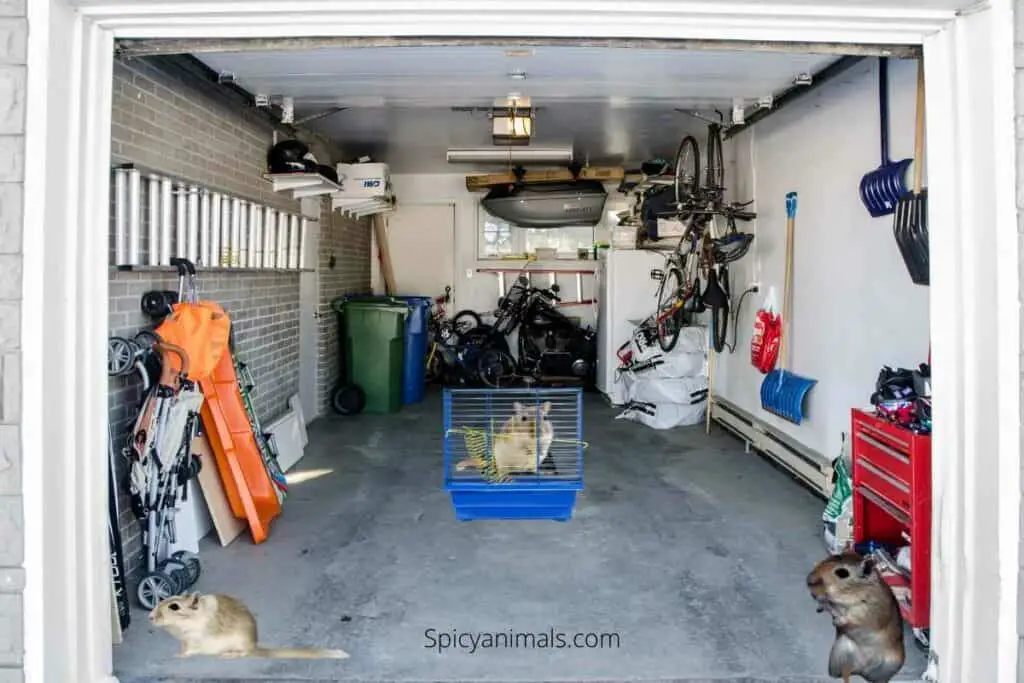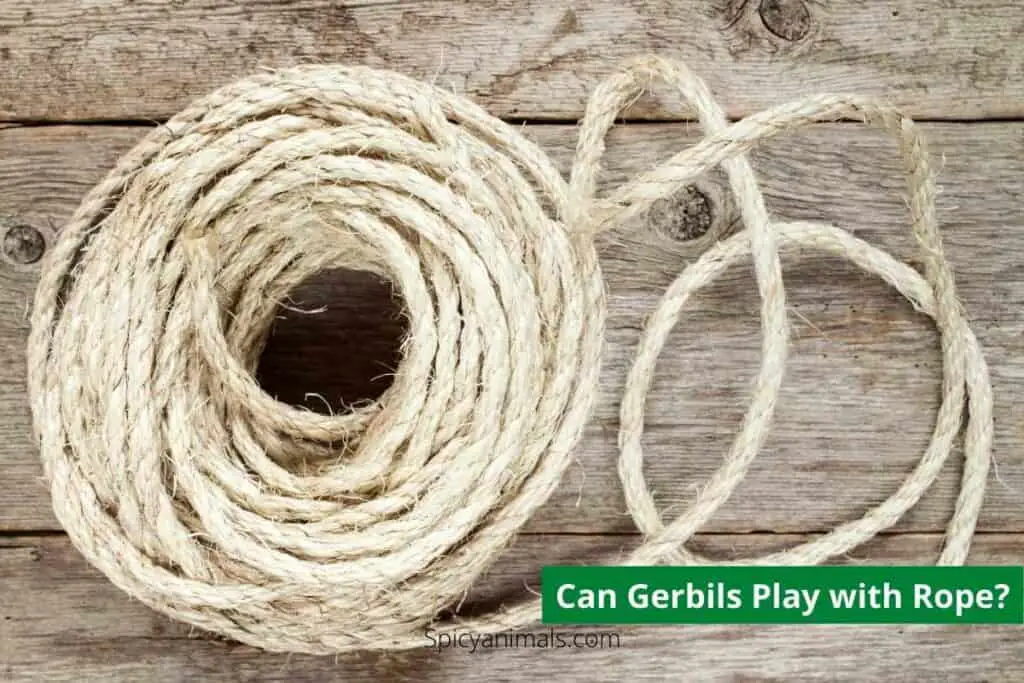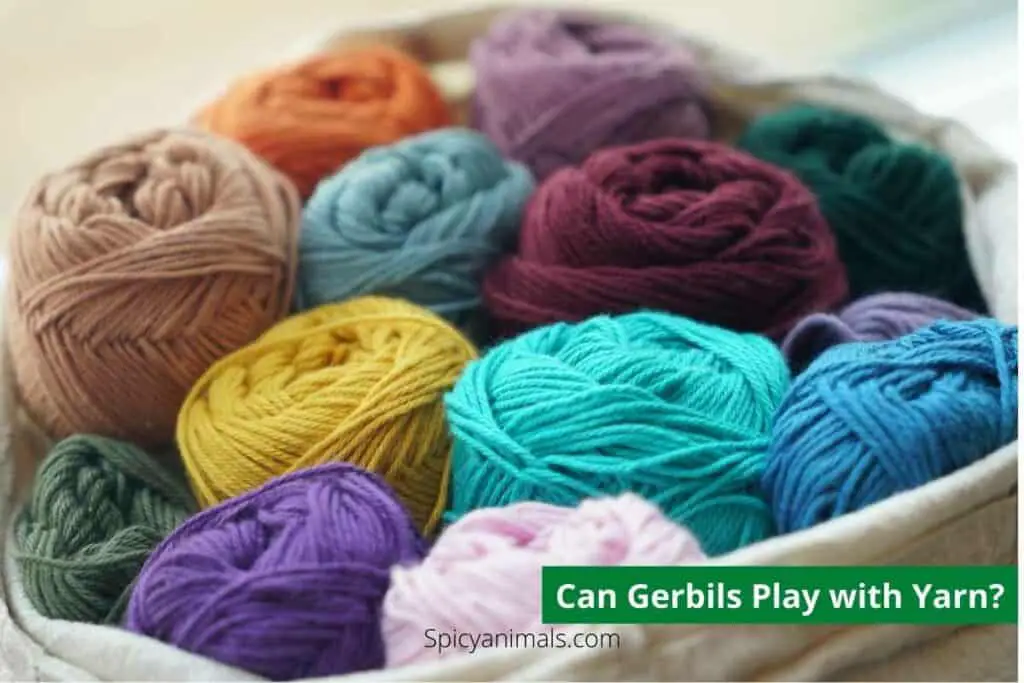Gerbils, like other “pocket pets”, are active, intelligent little critters. It can be challenging to find ways to keep them entertained and mentally stimulated. Fortunately, there are many simple, safe, and affordable options available that can provide hours of entertainment for your pet gerbil.
Gerbils love to explore and hide in tunnels as part of their natural behavior; they use the tunnels to explore their environment and also as a hiding place if they get scared or feel threatened. Creating an environment with a variety of interactive hiding tunnels and toys allows your gerbil to practice natural behaviors while helping to promote their physical health and well-being.
Providing small toys like balls, chew sticks, playdough molds, or other items that can be moved around the gerbil cage will enable your pet gerbil to express its natural curiosity by exploring its habitat. Additionally, adding small chewable items such as untreated wood blocks will help keeps it physically active while providing mental stimulation from engaging in novel activities.
These fun toys and enrichment activities are sure to keep your pet gerbils happy and active!
Table of Contents
Types of Gerbil Toys

Gerbils are active and playful animals. As pet owners, one of the best ways to keep them healthy and happy is to provide them with the proper toys and enrichment. There are a variety of toys available, so it is important to know the types and benefits of each.
This section will cover the different types of gerbil toys and the benefits they provide.
Chew Toys
Chew toys are great for keeping gerbils’ teeth in check and making sure they don’t get too long. They also offer mental stimulation and can be lots of fun for gerbils to explore. Gerbils love to gnaw on chew toys made from wood, hard plastic, or other safe materials and different shapes will give them something new to explore.
Wooden blocks, hard plastic jacks, balls, wooden wheels, and sticks with nuts or vines are all great chew toys for gerbils — just make sure any toy you buy has no small parts that your gerbil can knock off and eat! To clean the toys, soak them in a solution of five percent bleach and 90 percent water or boil them in plain water.
You can also make lots of your own chew toys using things around the house. Wood blocks, paper roll tubes, tree branches (check the end carefully to make sure it hasn’t been treated with a hazardous chemical), and cardboard boxes cut into pieces have all been favorites among our gerbils! Just remember: anything you give them should always be safe and non-toxic.
Exercise Wheels
Exercise Wheels are a popular toy for gerbils and can provide both fun and exercise. When choosing an exercise wheel, it is important to find one that has a solid running surface. Gerbils need to be able to grip the wheel while they run and it should not have any flat spots or disruptions in their running path. Wheels come in many sizes, from the tiniest wheels suitable for Dwarf gerbils to large-diameter wheels designed for regular-size gerbils.
It is also important to pay attention to the type of wheel you select. Gerbils may also enjoy using exercise balls, which allow them to explore their environment safely as they are enclosed inside the ball. If your gerbil does manage to escape from its ball, consider buying an exercise wheel with an attached cover or secure lid so your pet can’t make a break for freedom! Exercise tunnels provide another fun option, as they allow your furry friends to scurry through and explore unfamiliar terrain.
In addition, there are varieties of gyroscopic wheels that enable your gerbil’s natural instinctive movements while providing several hours of activity each day. These toys can help enrich both your pet’s life and support its physical well-being by providing necessary coordination and sensory stimulation through challenging playtime activities!
Foraging Toys
Gerbils are born foragers and providing them with tools to hunt and search out food rewards is one of the best ways to satisfy their natural instincts. Creative play can also make gerbils smarter, just like it does for children. A variety of foraging toys can be found at pet stores or even online, or you can use easily found materials to create your own.
Gerbil mazes are often designed as games or puzzles so that the gerbil must figure out how to use its nose and whiskers to manipulate pieces and levers in order to release food rewards. These games come in a wide range of designs—from tunnels systems, arcs and cages made from wood, plastic, and even cardboard—as well as wire maze sets that look more like small garden mazes.
Another great way to challenge them is by providing hiding spots, such as homemade tubes from paper towel rolls filled with toilet paper tubes stuffed with treats inside. You can also hide food in cubes made from materials such as Lego bricks or blocks constructed from matchboxes that require the gerbil’s nimble paws to pry apart.
Giving your gerbils access to cardboard boxes provides them hours of fun by tearing off the pieces for their nesting material or using it as a thoroughfare through their cage. Make sure any boxes used have not been treated with chemicals; always source cardboard from recycling bins rather than buying new boxes if you are unsure of the origin.
Awesome DIY projects include making a giant checkerboard out of felt foam board squares perched up on rocks with treats tucked away under each one! There’s also no limit when it comes to helping your furry friend construct a personalized house out of items like round shoe inserts, fabric flowers, and tiny mirrors they can hang inside the cage.. The possibilities are endless!
Hideouts
Hideouts provide a secure, dark shelter in which to retreat. These can be as simple as a cardboard tube or a cardboard box with some shredded paper. Commercial hideouts can also be purchased, and these often have details such as tunnels and platforms that your gerbil can explore.
Having multiple hideouts gives your gerbil lots of options; it might like to move between different hideouts or just hang out in one place for long periods of time.
Tunnels
One of the things that the gerbil love most is a good tunnel system. Tunnels provide irresistible hideouts for their natural digging behavior, as well as providing an adventure for your gerbil to help keep them busy and stimulate their minds. Tunnels come in a variety of materials including wood, PVC, and plastic. All of these materials are safe for gerbils and provide different levels of enrichment for your furry friend.
Tunnels made of wood provide a great hiding spot and can also double as chew toys that help keep your gerbil’s teeth healthy by preventing overgrowth. Wood tunnels tend to be more expensive than other options but they last much longer. Plastic tunnels are simpler to clean than other types because they can easily be unscrewed and rinsed with water while PVC tunnels are lightweight and easy to move around the cage if needed.
When setting up your tunnel system make sure it isn’t too crowded or cramped – this could make it difficult for your gerbil to maneuver through all the twists and turns which could lead to frustration or an unhappy pet, instead of an active one! Be creative with the size, shape, length, and color when you set up the tunnels – these factors can all help contribute to providing more enrichment for your gerbil’s tunneling activities!
Enrichment Activities
When it comes to keeping pet gerbils entertained and active, enrichment activities are a great way to provide them with mental stimulation. With enrichment activities, you can ensure your gerbils get the stimulation that they need to help keep them physically and mentally healthy.
There is a wide range of activities you can do to enrich your gerbils’ lives, from toys to scavenger hunts. Let’s explore some of the different activities you can do to give your gerbil a fun-filled life.
Building Obstacle Courses
Creating obstacle courses for your gerbils can provide them with mental and physical stimulation. This type of enrichment allows your gerbils the chance to explore, create, and learn as they adventure through different paths. When designing the course, it is important to utilize various materials that are safe to use in an enclosure such as cardboard, paper towel tubes, apple sticks cut into cubes and natural branches. This will keep them physically active while they learn how to maneuver through the different activities and courses.
Additionally, you can build hideaways in which your gerbils can rest or relax without being disturbed. Burrowing boxes are perfect for this purpose because they provide your furry friend with a private space while allowing them to feel secure. These boxes also come in handy when sleeping or if they get scared of loud noises from outside the enclosure.
Finally, placing objects such as wooden blocks within their living area is a great way for them to stay mentally stimulated. It also helps encourage their natural curiosity since it encourages exploration and playtime within the environment. Shifting these toys around periodically keeps them engaged since it offers variety rather than monotone activities within their habitat.
Hide and Seek
Playing a game of hide and seek with your pet gerbil can be a fun way to help provide mental stimulation. When playing hide and seek, simply hide a tasty piece of food somewhere in the cage and watch your gerbil scramble around looking for it. Once they’ve found the treat, you should be sure to give them plenty of praise. You can mix things up by using different treats or changing the location each time you play. Additionally, having multiple hiding places can add more complexity to the game! This is a great activity for children to do with their gerbils and will help build their bond together.
Another variation of this game is hiding small play objects and pieces of wood around the cage — this will give your gerbils something fun to search for during their exploratory playtime, but again make sure any items are safe and that there are no small parts that could cause harm or be swallowed. Of course from your gerbil’s perspective — food is always going to be a better prize than an item that has no nutritional value, so it’s best to stick with treats when you’re playing hide and seek!
Playing with Other Pets
Interactive playtime with another pet can be an exciting and enriching experience for your gerbil. Taking the time to gradually introduce pets can help to create a setting where both animals are in a secure and comfortable position when playing together. It’s important to remember that although some species may get along quite well, not all interactions will be successful or safe.
When introducing pets, start by setting up a safe and secure area where the animals can get to know each other without feeling any pressure or stress. Place food treats and fun toys in this area while they observe each other and become familiar with one another’s scent. As both animals appear relaxed, you may begin to involve yourself in playtime. However, it is important not to leave them unsupervised at any point during this process, as even if they seem friendly at first, additional interactions may trigger intense reactions as familiarity develops.
Be sure to protect your pets from harm — use your judgment if certain behaviors become aggressive or intimidating — if either animal appears anxious or uncomfortable, it is best to separate them immediately and start the acclimation process from the beginning. If the successful introduction is achieved between two species, playtime with both species should be regularly scheduled for maximum enrichment of each playful personality!
Training
Gerbils are smart, inquisitive creatures and with the right encouragement can be taught fun behaviors. Training your gerbil to accept basic commands such as coming over when called or moving between two objects is achievable with patience, consistency and reward.
Basic training can be achieved with a simple step-by-step approach, starting small and gradually increasing the difficulty:
- Start by introducing a favorite treat near your gerbil where they will easily find it. Gradually move it further away and reward them for finding it.
- From simple commands such as “Come” or “Sit,” try introducing a target stick or shaped object that your gerbil can follow. Place it next to their food bowl, treats or favorite spot so that you reward them for following it each time.
- For more advanced commands try placing an obstacle for your gerbil to climb over either in the shape of an A-frame or some cardboard in a box form You can also teach them to recall using a clicker followed by their reward as incentives for learning new behaviors.
Conclusion
Gerbils are cheeky, adorable animals and they deserve enrichment that matches their energy level. If you provide them with the right activities, you can look forward to many happy years of gerbil ownership. Creating and maintaining an enriching environment is as important as feeding your gerbils a nutritious diet and providing proper veterinary care. With a few simple items such as exercise wheels, tunnels and tubes, your gerbil will be able to express their natural behaviors in a safe and fun way.
The most important thing to remember when building an enriching environment for your gerbil is that the items should be appropriate for their size, safe from any sharp edges or holes they could crawl into and constructed using materials that won’t break easily. The items should also be checked periodically to ensure they remain clean and in good condition so that your pet remains happy, healthy and entertained!




